气候战略为何重要
治理
乙
Greif 的 2021 年 CDP 评分
在碳管理、治理、战略和最佳实践方面表现卓越,且超过整体和北美平均CDP评分C。
我们的碳足迹和气候责任贯穿我们产品的整个生命周期——从原材料的提取到产品的使用和报废。自 2010 年以来,Greif 一直拥有一支全球气候团队[1],由来自所有业务部门和地区的代表组成,负责为工厂提供支持、指导和方向,以确定能源和减排项目。该团队还负责帮助工厂制定路线图并跟踪实现 2030 年目标的进展情况。2019 年,我们重组了团队,更加重视包括区域领导,以便更好地参与和确定每个业务部门和传统 Caraustar 工厂内的机会。这种结构变化简化了我们的能源路线图流程,使我们能够专注于并投资于具有最有影响力机会的业务部门和工厂。
今年,我们的领导委员会专注于可持续发展,委员会的一个小组专门负责气候问题。委员会和气候团队每季度举行一次会议,确定需要采取的行动项目,以推动实现 2030 年排放目标,提高整个组织对气候目标的认识,并建立问责制,直接向首席执行官汇报,以更新和协作环境目标和举措。
今年,我们的领导委员会专注于可持续发展,委员会的一个小组专门负责气候问题。委员会和气候团队每季度举行一次会议,确定需要采取的行动项目,以推动实现 2030 年排放目标,提高整个组织对气候目标的认识,并建立问责制,直接向首席执行官汇报,以更新和协作环境目标和举措。
能源效率是资本部署的一个考虑因素。我们将 ESG 纳入资本请求标准,作为我们资本分配系统的一部分,并进一步证明 ESG 对我们业务的影响。我们在决策过程中筛选 ESG 效益,例如减少能源消耗、减少原材料使用以及提高人员和产品的健康和安全。以前,每个工厂负责制定自己的路线图,而现在,区域领导层负责与每个业务部门合作,以确定节能和提高效率的机会。
2021 年,我们实施了 23 个节能项目,为整个组织节省了超过 $440,000 美元。这些项目包括更换设备和更新流程以减少能源需求,例如更换烤箱、空气压缩机和锅炉、调节水温和实施节能措施,例如更换照明和暖通空调。有关我们的节能项目的更多信息,请参阅我们 2021 年的 C4.2 和 C4.3b 节 CDP 气候响应.
2020 年,我们根据气候相关财务披露工作组 (TCFD) 的建议对当前的气候管理实践进行了差距分析,以确定推进气候战略的重点领域,并在多种温度情景下模拟了潜在的气候目标。这项工作促成了我们新的 2030 年排放目标的确定和批准,并表明需要进行更详细的情景分析,以更好地了解我们的过渡和物理气候相关风险和机遇。作为 TCFD 和气候战略工作的成果,我们通过可持续发展管理团队与可持续发展指导委员会的季度会议、领导委员会对可持续发展的关注以及可持续发展副总裁、营销主管和首席执行官之间的季度会议实施了改善治理的行动。我们在每月的 Greif Business Systems (GBS) 手册、每月的必赢之战 (MWB) 记分卡和首席执行官的企业记分卡中报告 KPI。我们还将 ESG KPI 纳入每月和每季度的幻灯片中,管理人员使用这些幻灯片来确保团队的责任感。
2021 年,我们举办了一系列内部气候风险研讨会,以更好地了解我们业务面临的气候相关风险和机遇。通过研讨会,来自跨职能部门和我们全球业务的同事合作识别、排名和评估监管、市场和物理气候相关风险和机遇。通过这些研讨会,我们确定了对我们业务最重要的风险和机遇。然后,我们进行了情景分析和财务建模,以更好地了解对我们业务的潜在影响。团队为 Greif 创建了一份行动项目清单,以减轻和管理风险,以及利用机遇的策略。这项工作的成果将进一步融入我们的业务战略和风险管理流程。要了解有关我们的企业风险管理流程的更多信息,请访问 风险管理与业务连续性 我们的可持续发展报告部分。
|
风险/机会 |
话题 |
描述*
|
|---|---|---|
|
风险 |
自然灾害 |
大规模洪水/飓风/地震/风暴等导致关键或有价值的生产设施(一个或多个)的损失。 |
|
风险 |
碳定价机制 |
碳定价法规(例如限额与交易制度和碳税)正在一些市场(欧洲和北美)对 Greif 产生影响,并且可能在其他地区出现。这表现为一笔可观且不断增长的开支。 |
|
风险 |
投资/资本规划效率低下 |
缺乏资源来充分了解监管变化对战略决策和投资的影响可能会导致资本配置不理想。这包括设施比预期更快过时以及投资回报率低于预期。
|
|
风险 |
弹性/生产连续性 |
卓越的组织能力、相关的业务弹性、准备和敏捷性将使 Greif 能够更快地恢复生产水平,并在发生中断和灾难变得更加常见时更好地支持同事、客户和社区。
|
|
风险 |
直接环境灾难
|
三角洲、弗里兰和造纸厂等关键设施发生重大气候/天气相关事件,从而引发重大环境事件、金融事件,并可能导致公关/形象问题。
|
| 风险与机遇 | 客户偏好的转变 | 对可持续产品的需求正在增加。如果 Greif 未能迅速采取行动应对生产过程中再生材料的使用增加,则可能会减少对 Greif 产品和服务的需求。此外,限制 Greif 产品终端市场(如石油和天然气行业)的气候相关法规可能会限制 Greif 的业务,因为关键市场对其产品和服务的需求会减少。Greif 可以利用这一机会,迅速扩大我们的可持续产品组合。 |
| 机会 | 对 Greif 回收业务的影响 | 更宏伟的气候情景依赖于提高钢铁和塑料的回收率。如果定位正确,Greif 或许能够扩大其目前的修复实践规模。 |
|
机会 |
弹力
|
卓越的组织能力、相关的业务弹性、准备和敏捷性将使 Greif 能够更快地恢复生产水平,并在发生中断和灾难变得更加常见时更好地支持同事、客户和社区。 |
*请参阅 Greif 的 2021 年 CDP 气候变化响应 了解更多信息
[1] 原全球能源团队
目标与进展
2020 年,我们与第三方进行了详细的分析和评估,以了解我们是否有能力实现董事会批准的目标。 基于科学的目标倡议 (SBTi)。随后,我们宣布承诺到 2030 年将范围 1 和范围 2 的排放量在 2019 年的基础上减少 28%。这一新目标与现行的气候科学相一致,旨在将全球整体变暖限制在 2 摄氏度以下,并以公司 2020 年实现的单位生产排放量减少 11% 为基础。到 2023 年底,Greif 还将完成对其范围 3 排放量的评估,并确定与科学碳目标倡议保持一致的长期净零排放目标的可行性。
2021 年,我们专注于改进数据收集,同时继续提高运营的能源效率。这些努力包括开展研究以确定我们已过渡到 LED 的设施的百分比,并为开始计量和分表计量奠定基础。我们的四个生产设施获得了能源管理 ISO 50001 认证。我们还开始制定 2030 年路线图。我们长期路线图的一个组成部分是实施虚拟购电协议 (VPPA)。2022 年,我们将开始该项目的第一阶段和第二阶段的工作,包括与内部利益相关者接触、制定我们的战略并完成 RFP 以选定开发商。2022 年,我们还将制定和发布一项包括采购和可持续性要素的整体能源政策。
2030年目标: 在 2019 年的基础上,将范围 1 和范围 2 的绝对温室气体排放量减少 28%。Greif 还将完成对范围 3 排放量的评估,并在 2023 年底前确定长期净零排放目标的可行性。
表现
|
|
2017 财年 |
2018 财年 |
2019 财年 |
2020 财年 |
2021 财年 |
|---|---|---|---|---|---|
|
活力 |
|||||
|
3,058,000 |
3,103,200 |
5,398,000 |
5,423,000 |
5,832,000 |
|
- |
- |
基线 |
- |
-0.3% |
|
温室气体排放量(公吨) |
|||||
|
367,700 |
376,700 |
686,000 |
692,900 |
696,900 |
|
416,000 |
415,900 |
622,200 |
589,500 |
556,900 |
|
3,089,000 |
2,867,090 |
4,407,000 |
4,148,000 |
4,357,000 |
|
3,872,700 |
3,659,600 |
5,715,200 |
5,430,400 |
5,610,800 |
|
- |
- |
基线 |
- |
4.1% |
笔记:
- 总能源包括生物质和不可再生燃料、可再生和不可再生电力以及购买的蒸汽消耗。
- 由于 Greif 修改了能源使用数据,2019 财年范围 2 排放量自 2021 年起已重新表述。
- 2021财年的减幅是以2019财年为基准年计算的。
智利 Greif Pudahuel 实现 100% 可再生能源
Greif 位于智利的 Pudahuel 钢铁厂是我们在拉丁美洲第一家 100% 使用可再生能源的工厂。通过与能源供应商 IMELSA ENERGIA 合作的为期两年的项目,该工厂能够将其全部电力供应转向 100% 可再生能源。该工厂为化学品、润滑油和食品饮料市场生产大型钢桶、锥形桶和水瓶。这一转变推进了我们的可持续发展战略,支持我们 2030 年的温室气体减排目标,并有助于支持我们客户的范围 3 减排目标。
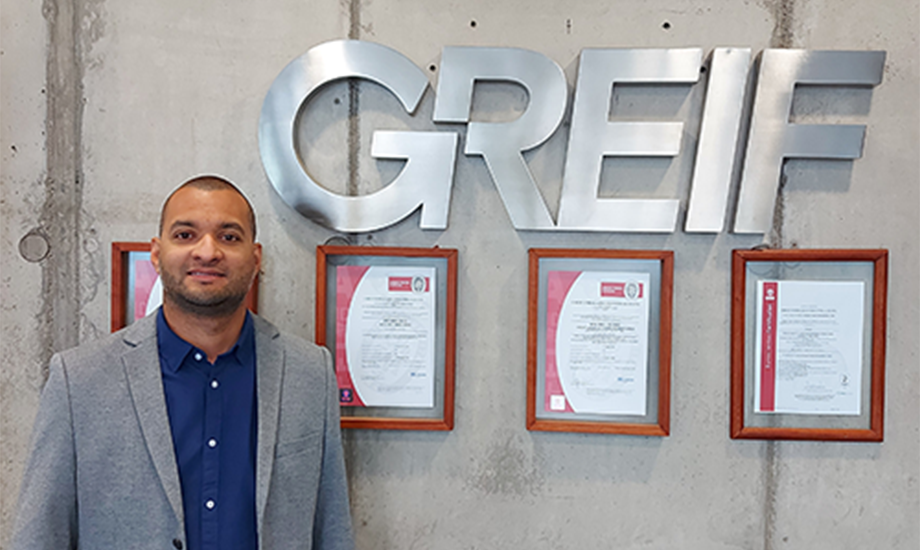
减排信用额(ERC)
为了降低 Greif 的氮氧化物 (NOx) 和挥发性有机化合物 (VOC) 等空气污染物的排放量,Greif 位于加利福尼亚州洛杉矶和马萨诸塞州菲奇堡的纸板厂将设备更换为更节能的技术,以减少空气污染物。仅在马萨诸塞州的工厂,一年就节省了 96 吨 NOx 和 27 吨 VOC。这些更新还使 Greif 能够利用加利福尼亚州和马萨诸塞州的限额与交易计划,这些计划为类似活动提供 ERC。2019 年,Greif 通过这些计划获得了 $1,037,100 的 ERC。
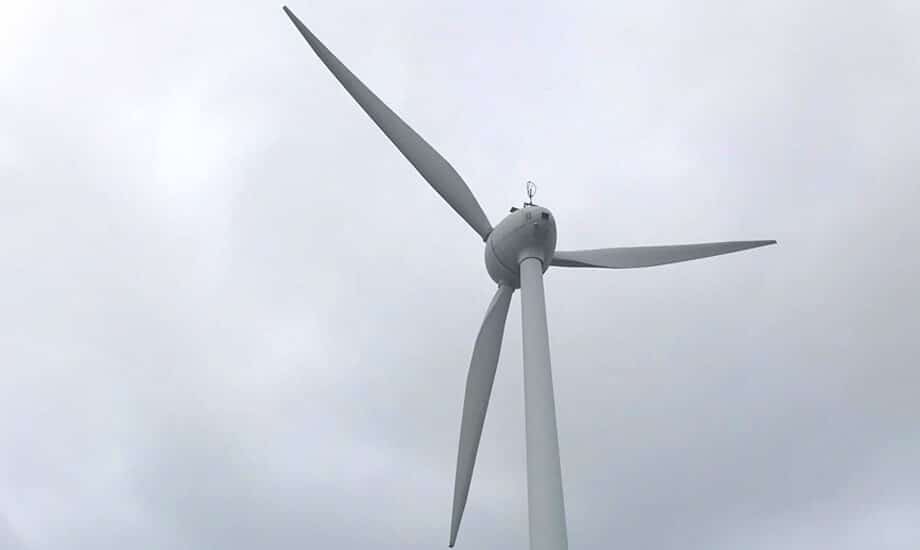
过渡到电动叉车
作为我们拥有更高效、更可持续设备的总体目标的一部分,我们在 2018 年开始将叉车车队从燃油驱动转换为电力驱动,这可将叉车排放量减少约 50%。到 2021 年,我们已将 EMEA 地区 85% 的叉车转换为电力驱动,并实现了 $365,000 的成本节省。由于该计划的成功,并为了支持我们的整体可再生叉车政策,该计划将在全球范围内推广。除了环境效益外,这一转变还通过减少在我们的设施中存放汽油容器的需要,为我们的同事提供了更安全的工作环境。
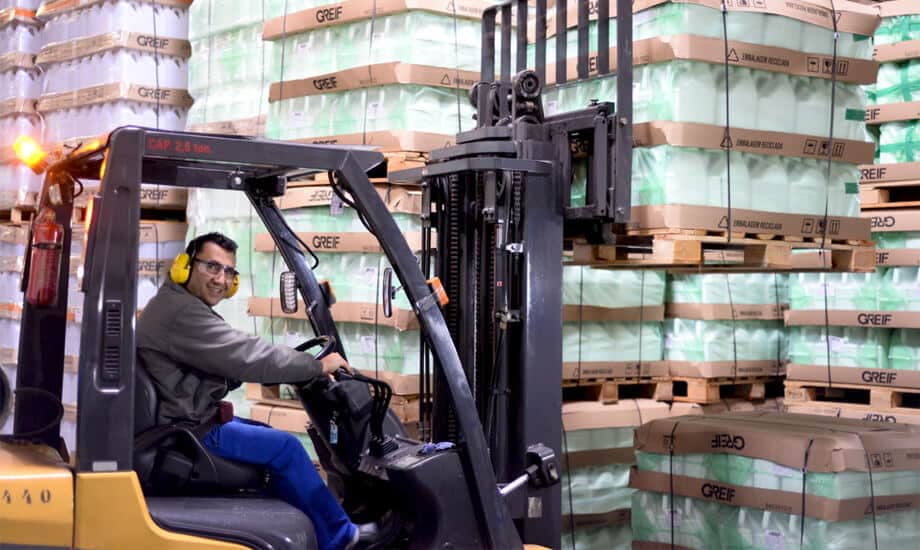
生产中的能源效率
Greif 最近对一台新型吹塑机进行了大规模投资,该吹塑机用于在摩洛哥卡萨布兰卡的工厂生产 Greif 的塑料油桶。与上一代机器相比,新机器的能耗降低了 30%,同时生产效率也显著提高。新设备可将我们的 1 至 5 升瓶的生产能力提高 25%,并且旨在优化和减少原材料使用,将机器的环境效益扩展到能源使用之外。
摩洛哥团队还实施了其他能源效率项目,例如消除塑料和钢铁厂的空气泄漏、将四台机器上的液压挤出机替换为电动挤出机、升级旧设备以及将几台吹塑机上的直流电机替换为交流电机,这些都有助于显著降低我们的能源消耗。
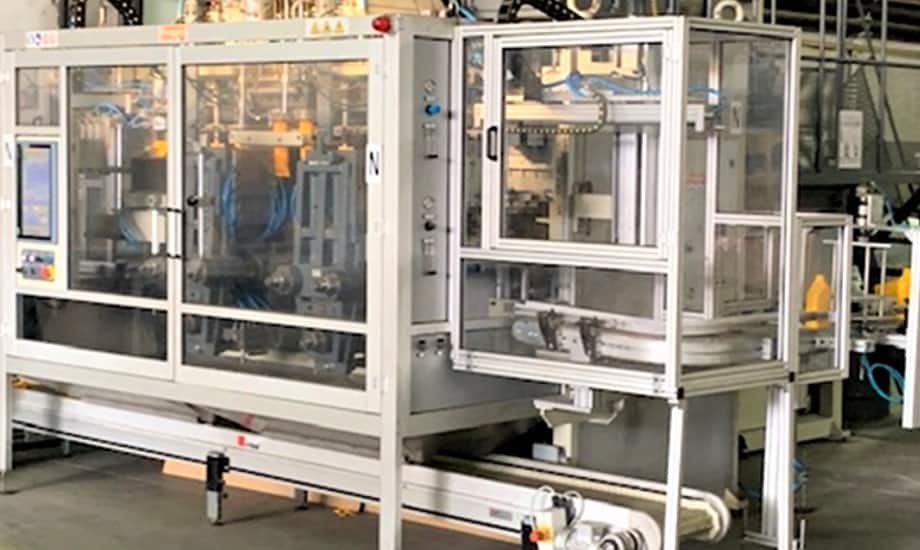
推进可再生能源
生物质能、太阳能和风能等可再生能源将在长期应对气候变化挑战中发挥重要作用。我们致力于在我们的全球运营中测试和扩大可再生能源技术的使用,只要这样做在经济上可行并且符合我们利益相关者的最佳利益。在我们的全球运营中,我们安装了超过 6,900 块太阳能电池板,可产生 187 万千瓦时 (kWh) 的太阳能。由于我们持续的投资,可再生能源现在占 Greif 能源使用量的 12%。
在北美,我们在七个设施安装了超过 2,000 块太阳能电池板,每年提供 760,000 千瓦时的电能,节省超过 $112,000 美元。
2016 年,我们巴西最大的三家工厂开始部分采用可再生资源作为能源。2017 年,我们将该计划扩展到巴西的另外三家工厂,排放量减少了 70%,每年节省 $140 万美元。
2017 年 4 月,Greif 的上海 RIPS 工厂完成了太阳能电池板的安装,将工厂 15.4% 的电力转换为可再生能源,每年节省超过 $16,000 美元。在我们的中国业务中,我们通过能源购买合同使用 4,800 块太阳能电池板来获取可再生能源。
我们的土耳其 FPS 业务通过风力涡轮机和风车生产了超过 200 万千瓦时的电能。
2020 年和 2021 年,我们在以色列工厂的屋顶安装了太阳能电池板。这些电池板可减少 748 吨二氧化碳的排放2 将该设施每年 12% 的能源消耗转化为清洁太阳能,并支持降低供暖和制冷成本。
2021 年,我们位于荷兰埃德的两家工厂的太阳能电池板生产了超过 100 万千瓦时的电力。
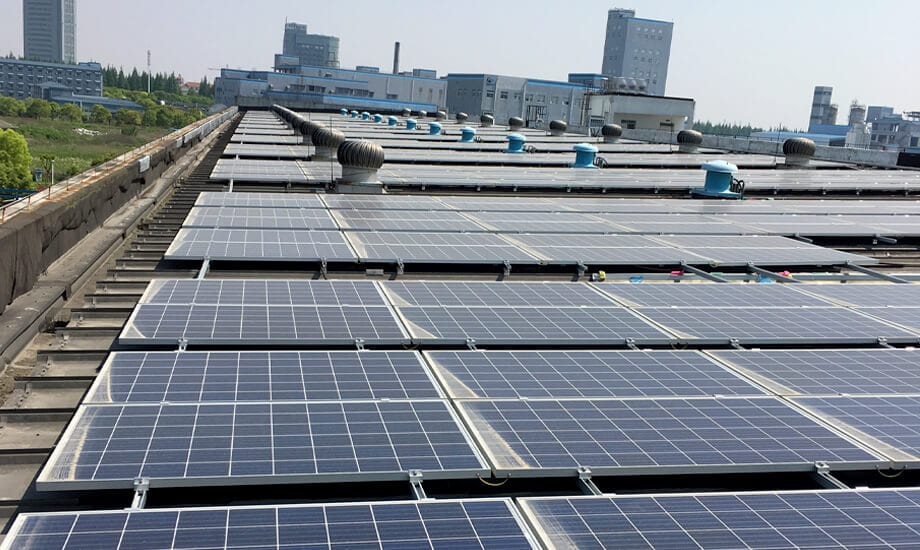
EPA 的 SmartWay 交通合作伙伴关系
为了以环保的方式管理物流,Greif 使用通过 EPA 批准的承运商 智能通道 尽可能地采取主动行动。我们在新的承运商认证流程中加入了 SmartWay 认证。Greif 的 SmartWay 认证承运商基地占总行驶里程的 77%。
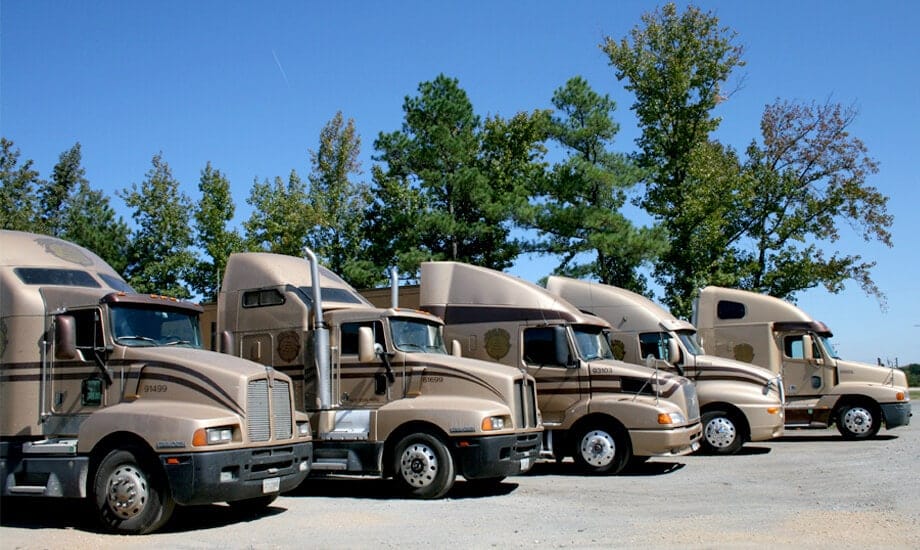
可持续发展亮点
12%
可再生能源
我们将继续投资具有成本效益的可再生能源项目,以减少我们的温室气体足迹。
乙
Greif 的 2021 年 CDP 评分
在碳管理、治理、战略和最佳实践方面表现卓越,且超过整体和北美平均CDP评分C。




